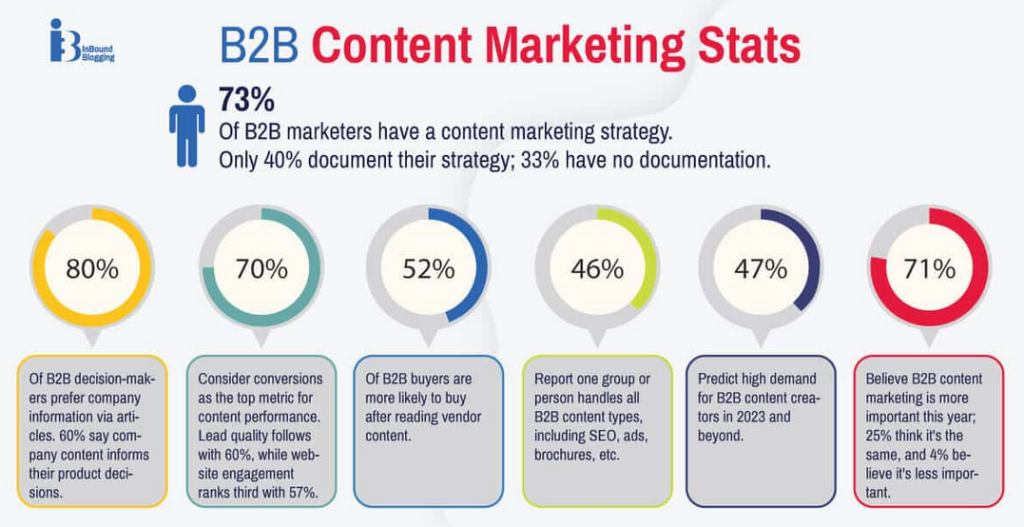- Home
- Fundamentals of Email Marketing
- How to Use Email Marketing for ...

Some things work because they’ve always worked. Others work because they’ve evolved. Email marketing is both. It’s been around for decades, yet it’s still one of the most effective B2B lead generation strategies—not because it hasn’t changed, but because it has.
Unlike B2C, where purchases sometimes happen instantly, B2B decisions take time. There are multiple stakeholders, long sales cycles, and a whole lot of trust-building along the way. That’s why email marketing works so well for B2B. It gives businesses something no other channel does: consistent, direct access to decision-makers. When done right, it nurtures potential leads, educates them, and keeps your brand top of mind until the timing is right.
In this article, we’ll break down how to apply email lead generation methods for B2B—from building a high-quality email list to creating engaging content and automating campaigns for maximum impact. Let’s get into it.
What Is B2B Lead Generation?
Some things happen fast. You see a sale—you buy the shoes. You get a text—you reply. But B2B lead generation doesn’t work that way. There are no impulse buys, no “add to cart” moments. It is a slow, measured, and deliberate process.
What is lead generation in B2B? It’s the art (and endless challenge) of getting your brand in front of decision-makers, keeping their attention long enough to build trust, and nudging them, little by little, toward a sale that might not happen for months. Sometimes—even years. Yes, it is definitely not immediate.
At its core, business lead generation is about solving a problem the prospect doesn’t even realize they have. It’s about showing up at the right time, in the right place, with the right message—not once, not twice, but over and over until the timing clicks.
Types of B2B Leads
Not all leads are equally important. Some are barely aware your company exists. Others are comparing you to competitors, waiting for a sign to choose you over the competition. And then there are the ones who’ve already made up their minds—in your favor… or not.

Let’s look at this spectrum more precisely:
- Marketing-qualified leads (MQLs): People who’ve engaged with your content but aren’t quite ready for a sales call. Maybe they’ve downloaded a whitepaper, signed up for a webinar, or clicked through an email. They already have an interest in you, but the urgency is still not there.
- Sales-qualified leads (SQLs): People who’ve moved beyond curiosity. They’ve asked for a demo, requested pricing, maybe even responded to an outreach email. These leads aren’t just window-shopping, but are ready to talk business.
- Product-qualified leads (PQLs): If your company offers a free trial or freemium version, this is where these leads come in. They’ve used the product and seen its value, making them far more likely to convert compared to an MQL. For B2B SaaS lead generation, PQLs are the most important.
- Cold vs. warm vs. hot leads: A cold lead is someone who has never interacted with your brand. A warm lead is aware of your company but hasn’t engaged deeply. And a hot lead is actively considering a purchase. The goal of any lead generation strategy is to move leads from cold to warm to hot as efficiently as possible.
Why Is Email Marketing Important for B2B Lead Generation?
Because email marketing is a direct tool that gives you control over what and when your leads will see. Unlike social media, where an algorithm decides who sees your content, email lands directly inside your prospect’s inbox.
A well-crafted B2B email can educate. It can build credibility. It can subtly guide a lead through the lead generation process without them even realizing they’re being moved down a funnel. That’s why companies invest in B2B lead generation strategies that prioritize email—not as an afterthought, but as a core channel. Because when you strip everything else away—ad budgets, SEO rankings, LinkedIn posts—the ability to send the right message, to the right person, at the right time is the main thing that drives conversions.

The Three Pillars of B2B Lead Generation via Email Marketing
1. Build an email list that’s actually worth something
You can’t generate leads if you’re talking to the wrong people. And you definitely can’t generate leads if you’re sending emails into the void. The first step in B2B lead generation is building a high-quality email list—one that’s filled with the kind of people who are actually interested in what you have to offer.
How do you do that?
✅ Use your website wisely. If your site gets traffic but you’re not capturing emails, you’re wasting your opportunities. Make it easy for visitors to sign up—attract them with an exclusive industry report, a webinar, or an early access offer.
✅ Leverage LinkedIn and social media. Cold outreach works better when it’s not totally cold. Connect with potential leads on LinkedIn first, engage with their content, and then move the conversation to email.
✅ Optimize landing pages. People don’t give up their email for nothing. Your landing pages should make it crystal clear why signing up is worth it. Maybe it’s a free tool, a case study, or a solution to a problem they’re actively trying to solve.
✅ Verify your list. An outdated email list might be even worse than no list at all. It hurts your open rates and tanks your sender reputation. To avoid that, use verification tools, such as Sendigram Email Checker.

2. Write emails people want to read (and act on)
The sad truth of most B2B emails is that most of them are bland, impersonal, and try way too hard to sell.
What differentiates a great email from a bad one is that it feels like a conversation. It has a purpose and is written as if a real person wrote it, and (most importantly) offers something valuable.
So, which elements turn just a B2B email into the one that actually works?
📌 Personalization that isn’t lazy. Starting with “Hi [First Name]” isn’t enough. Mention their company, reference a recent industry trend they’d care about, show them you did your homework.
📌 Subject lines that don’t blend in. If your subject line looks like a typical sales email, people will ignore it. Think about what makes you open an email. Curiosity, urgency, relevance—lean into those things.
📌 Content that gives, not just asks. If every email is about what you want, people will soon sign you off. Offer insights. Share a quick win. Give them something useful before you ask for anything in return.
📌 A call to action that doesn’t make people think. What do you want them to do next? Book a call? Read a case study? Whatever it is, don’t bury it. Make it painfully obvious.

3. Automate, but make it feel personal
Automation is great—until it isn’t. If your emails feel like a machine sending them, people will treat them like spam. But if you use automation the right way, it makes your email marketing smarter, faster, and more effective.
How do you find the balance?
✅ Segment your list like your business depends on it. Because it does. A VP of Sales and a Marketing Manager don’t need the same email. Personalize based on industry, role, and behavior.
✅ Set up smart drip campaigns. Not everyone is ready to buy right away. Actually, rarely anyone is. Automated nurture sequences keep you top of mind without being pushy.
✅ Use behavior-based triggers. Someone just downloaded your whitepaper? Checked out your pricing page? That’s your key to follow up—immediately.
✅ Test everything. Open rates, subject lines, CTA placements—if you’re not A/B testing, you’re guessing. And guessing doesn’t generate leads.

Advanced Tips to Do B2B Lead Generation Like a Pro
✨ Turn happy customers into your hype squad. Testimonials are great, but real success stories are always better. Get your happiest clients to vouch for you in a review, a case study, or even a quick video. People trust other people more than brands.
✨ Ask, and you shall receive (great insights!). Instead of guessing what your audience wants, just ask. A quick survey or a simple “What’s your biggest challenge?” email can give you more valuable insights than hours of market research.
✨ Know your dream customers like your best friend. The best B2B marketing doesn’t feel like marketing—it feels like understanding. Get into your prospects’ heads, figure out their pain points, and make your emails feel like a solution they’re looking for.
✨ Hit record and let the leads roll in. Video doesn’t need to be fancy to work. A short, casual clip explaining a key industry issue or showing how your product solves a problem can make your emails stand out.
✨ Bring in a guest star for extra credibility. People get tired of hearing brands talk about themselves. Bring in industry experts, customers, or even well-known influencers to add weight to your message.
To Sum Up
In the B2B lead generation process, there’s no place for guesswork. It’s about knowing exactly who you’re trying to reach, understanding what makes them tick, and showing up with the right message at the right time. If you’re still wondering how to do B2B lead generation the right way, here’s the truth: it’s not about quick wins, but about building long-term relationships. As at its core, lead generation meaning involves earning attention, building trust, and staying in the game long enough for potential buyers to see that you’re the real deal.



